Discover our exclusive collection
Over 3,000 historic giclee prints, 16 artists and 40 complete sets
Any questions?
We are more than happy to help. Just send us a message, and we will be in touch
Jacques Barraband (1767-1809) was born in France. His father worked in the local tapestry factory, as did Barraband briefly.
Barraband was originally trained as a draughtsman at the celebrated Gobelins tapestry factory in Paris. Then he worked as a ceramic artist drawing for the Sévres factory. His achievements as an ornithological artist, illustrating the works of Levaillant and others, came later in life.
Barraband moved to Paris working at tapestry and carpet stores, and studying art at l’Academie Royale De Peinture.
In 1798 some of his work was exhibited in an exhibition for gobelins, which also included work that he made for a well-known porcelain manufacturer. He also made illustrations of insects for the naturalist Sonnini and illustrated a book about Egypt. Between 1801 and 1804 he was commissioned by Napoleon Bonaparte to make watercolors of birds and flowers.
Barraband became really famous for his depictions in the scientific publications of François Levaillant about parrots, birds of paradise, free-range birds, toucans, barbets, bee-eaters, trogons, turacos and African sugar birds.
Apart from their undoubted beauty, Barraband’s engravings display a scientific accuracy that few ornithological artists have matched since.
The meticulous hand-colored engravings in Levaillant’s publications were unmatched for the delicate modulations of tone and color, fine lines and perfect draftsmanship, making them exceptional in their richness and tonal variation. Each feather is described by dozens of parallel lines, providing remarkable detail and naturalistically textured color.
Some of the original prints are embellished with touches of gold leaf on the feathers of the cheeks and shoulders of the birds, emphasizing the preciousness of the plates and reproducing the iridescence of the birds’ feathers.
Barraband passed away on the age of 42. Francois Levaillant named the Barrabands parrot (Pyrilia barrabandi) after him as a tribute.
Taken from the original illustrations in the libraries of Teylers Museum in the Netherlands, the collection ‘Histoire Naturelle des Perroquets (1801-1805) ‘ Vol 1 and Vol 2 contain 2 x 72 giclee prints after the hand-colored originals.
Over 3,000 historic giclee prints, 16 artists and 40 complete sets
We are more than happy to help. Just send us a message, and we will be in touch
Chambre of Commerce: 75 23 82 84
VAT: NL860202604B01
To subscribe to our newsletter and be updated about new and interesting additions to our collection, please enter your email address below.

© Heritage Prints 1992-2022 | All rights reserved